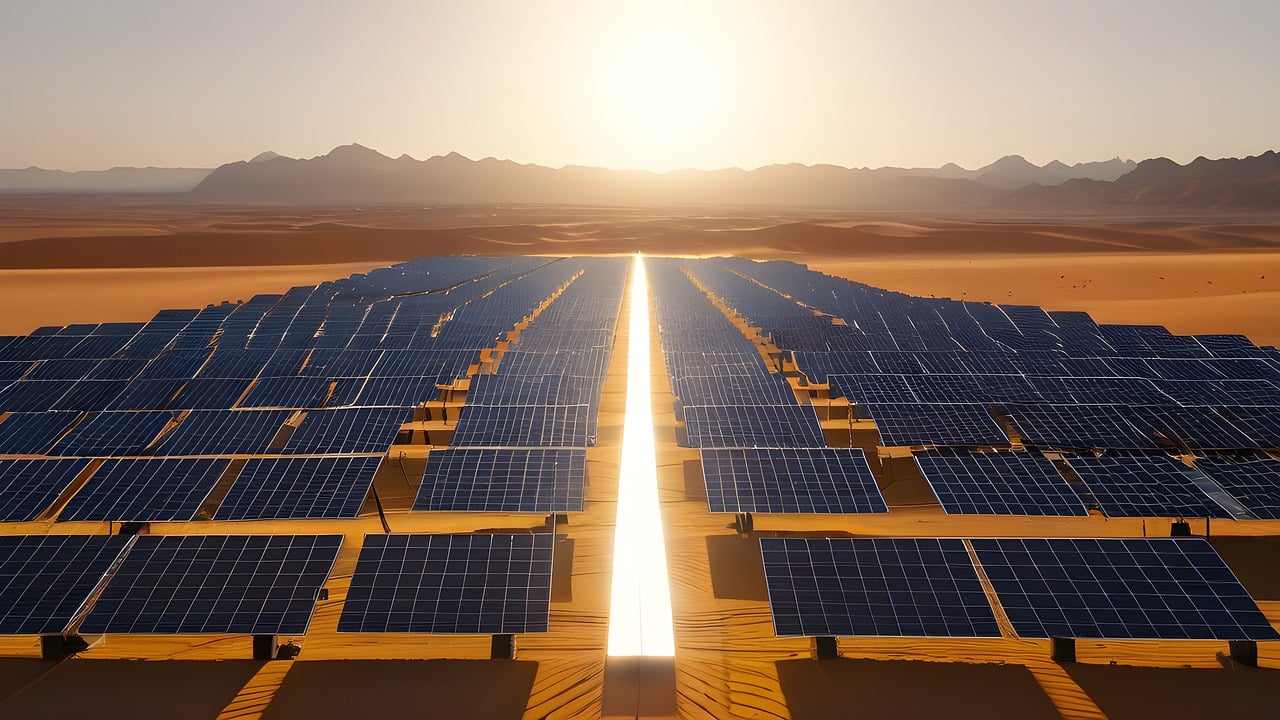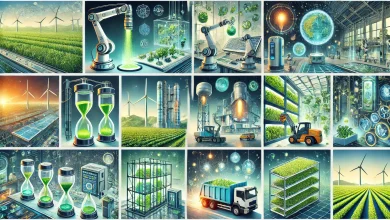How Renewable Energy Innovations Are Reshaping Our Future

How Renewable Energy Innovations Are Reshaping Our Future? Renewable energy is rapidly gaining traction as countries, communities, and industries recognize the urgent need to reduce carbon emissions, cut back on fossil fuels, and embrace more sustainable methods of generating power. This shift is not only driven by environmental concerns, but also by economic factors, technological advancements, and growing public support. From solar and wind technologies to green hydrogen and biofuels, innovative solutions are reshaping the way we create and consume energy. As these innovations continue to evolve, they hold the promise of a cleaner, more resilient future.
One of the most significant breakthroughs in renewable energy has been the massive drop in solar power costs. Researchers and manufacturers have poured resources into improving photovoltaic cell efficiency, resulting in solar panels that are more affordable and more efficient. Meanwhile, large-scale solar farms can generate vast amounts of electricity, and smaller home installations are turning households into mini power plants capable of feeding excess energy back into the grid. Innovations in solar-storage systems also mean that the electricity generated during peak hours can be used later in the day or evening, helping balance the grid and reduce reliance on traditional power plants.
Game-Changing Innovations in Solar Energy
Wind energy has also benefitted from engineering and technological advances. Turbine designs have become more sophisticated, resulting in taller, more efficient structures that capture stronger winds and generate more electricity. Offshore wind installations are particularly promising, as they tap into abundant winds over the ocean. While building turbines far from the shore presents logistical challenges, innovative floating platforms and improved marine infrastructure are making offshore wind farms increasingly viable, opening new frontiers for clean power generation.
Beyond solar and wind, other emerging technologies are shaping the future of renewable energy. Green hydrogen, produced through electrolysis using renewable electricity, is drawing attention as a possible way to decarbonize sectors that are hard to electrify, such as heavy industry, shipping, and aviation. In particular, hydrogen fuel cells offer the potential to store and transport energy with minimal environmental impact. Although challenges remain in scaling up electrolyzer production and developing hydrogen infrastructure, the momentum around green hydrogen signals growing acceptance of its role in transforming the energy landscape.

Bioenergy’s Transformative Potential
Bioenergy is another important piece of the puzzle. Biofuels derived from organic materials like agricultural waste, algae, or municipal waste hold promise for replacing conventional fuels in many applications. By capturing the carbon dioxide produced when the biomass is burned and then sequestering it, bioenergy can be coupled with carbon capture and storage technologies, leading to potential net-negative emissions. Research continues to explore new ways to increase the efficiency of bioenergy, reduce land-use concerns, and ensure that feedstocks are sustainably managed.
Energy Storage: The Key to Unlocking Renewables’ Potential
Energy storage remains a key component in any plan to expand the role of renewables. With solar and wind power generation subject to fluctuations based on weather conditions, reliable storage systems are essential for ensuring a steady, resilient supply of electricity. Lithium-ion batteries have seen remarkable improvements in cost and performance, making them more attractive for electric vehicles and large-scale grid storage. Meanwhile, other battery chemistries such as sodium-ion, solid-state, and flow batteries are under development, offering promise for safer, more durable, and potentially cheaper alternatives.
Smart grids and digital technologies are also instrumental in maximizing the benefits of renewable energy. By leveraging advanced sensors, data analytics, and automated control systems, modern grids can instantly adjust to fluctuations in energy supply and demand. This ensures more stable operation while helping consumers lower energy costs, especially when paired with flexible pricing models that incentivize off-peak usage. Additionally, smart home devices, electric vehicle charging systems, and energy management software make it possible for individuals to optimize their energy consumption, contributing to a more distributed and reliable power ecosystem.
Policy plays a vital role in accelerating the adoption of renewable energy technologies. Financial incentives like tax credits and rebates encourage investments in solar panels, wind farms, and energy-efficient upgrades. Governments worldwide are setting ambitious targets for renewable energy generation, and in some cases, mandating reductions in carbon emissions. These initiatives help build public confidence in clean energy and spur further innovation. Moving forward, international collaboration on research, standard-setting, and sharing best practices will be critical to maintaining momentum.
Economics and job creation also fuel the growth of renewable energy. As technology becomes more affordable, businesses are taking advantage of cost savings and marketing the benefits of a greener brand. Likewise, individuals and communities are embracing solar panels and other systems that reduce monthly utility bills. The rise of clean energy industries offers new employment opportunities for skilled labor in manufacturing, installation, maintenance, and research. In turn, this stimulates local economies, particularly in regions that invest heavily in renewable projects.
The impact of renewable energy on global sustainability cannot be overstated. Investing in solar, wind, geothermal, hydro, and other forms of clean energy cuts carbon emissions, cleans the air, and curbs the worst effects of climate change. On a broader scale, transitioning to renewable energy can enhance energy security by reducing dependence on fossil fuels and their price volatility. This is especially important for nations vulnerable to geopolitical tensions or fluctuations in oil and gas markets. By establishing a robust, distributed energy system anchored in renewables, societies can strengthen their resilience in the face of natural disasters or economic uncertainties.
Looking ahead, the evolution of renewable energy technologies promises a future shaped by cleaner air, healthier communities, and greater economic opportunities. Continued research into solar panel efficiency, offshore wind structures, green hydrogen, and advanced bioenergy solutions will expand the scope of what is possible. Meanwhile, improvements in energy storage and digital tools will help balance supply and demand. The role of governments, institutions, and individuals in supporting these innovations will remain crucial, as policy and public awareness can accelerate or inhibit progress. Ultimately, by embracing renewable energy innovations and addressing the remaining challenges, we stand poised to reshape our energy landscape and secure a more sustainable future for generations to come.




